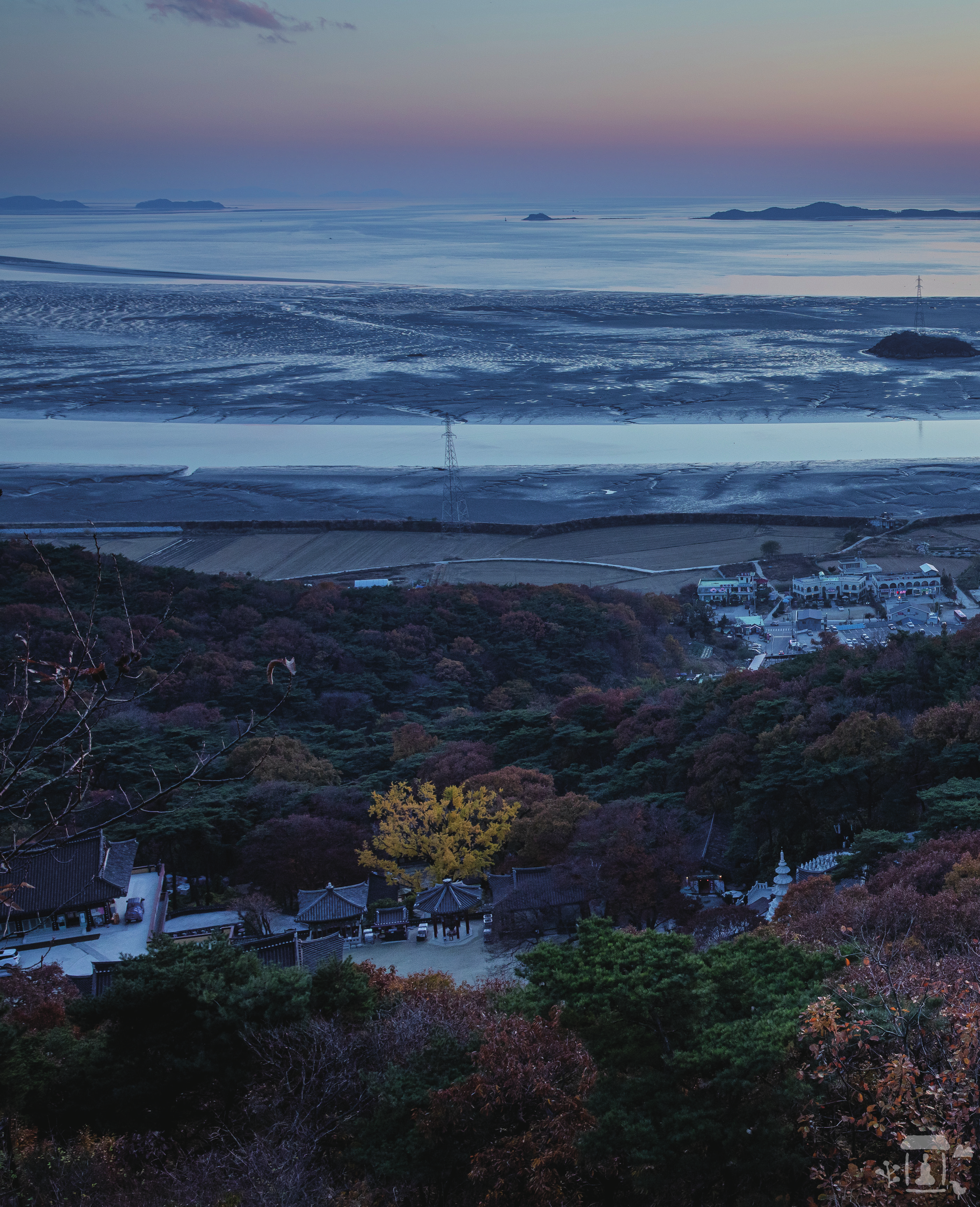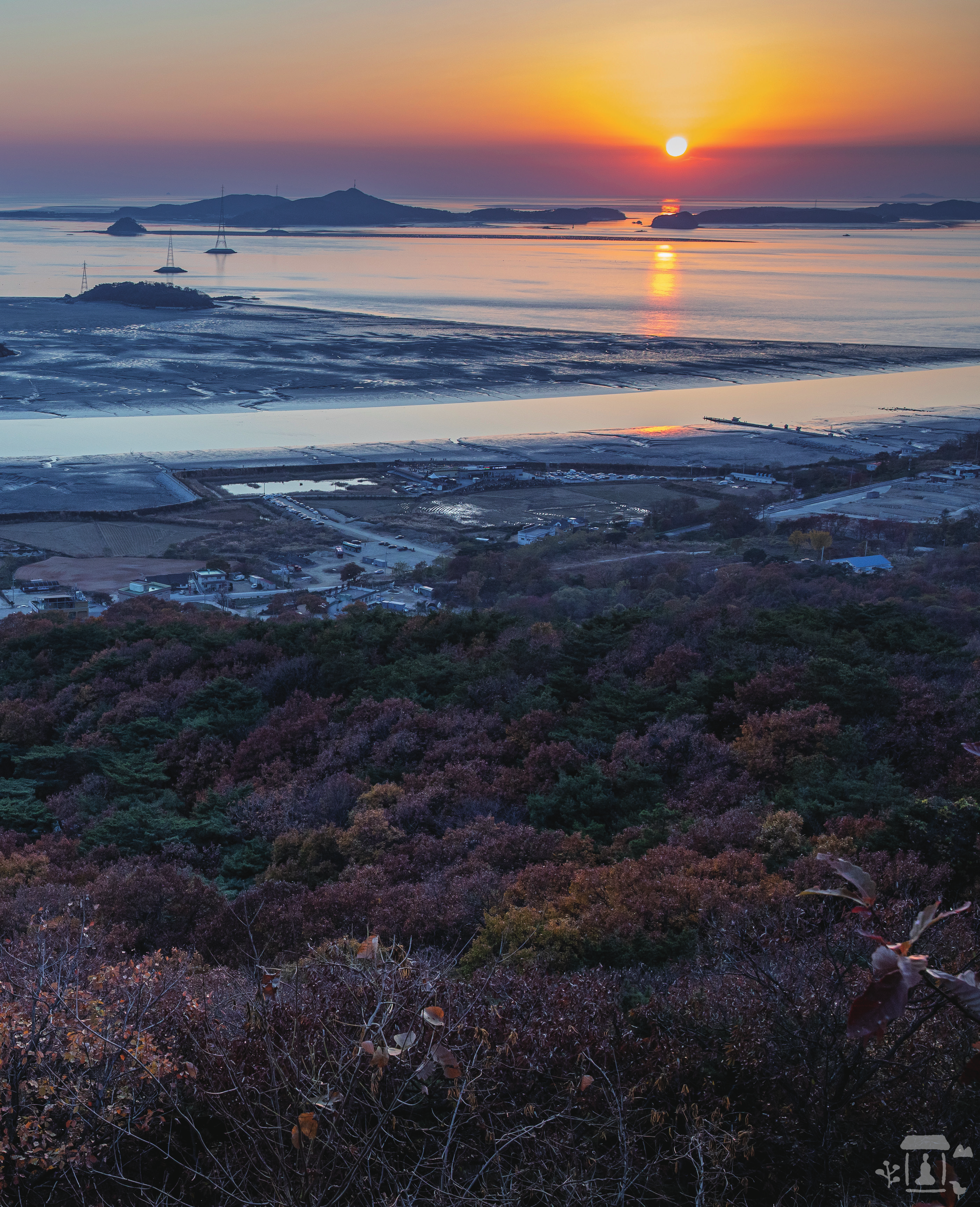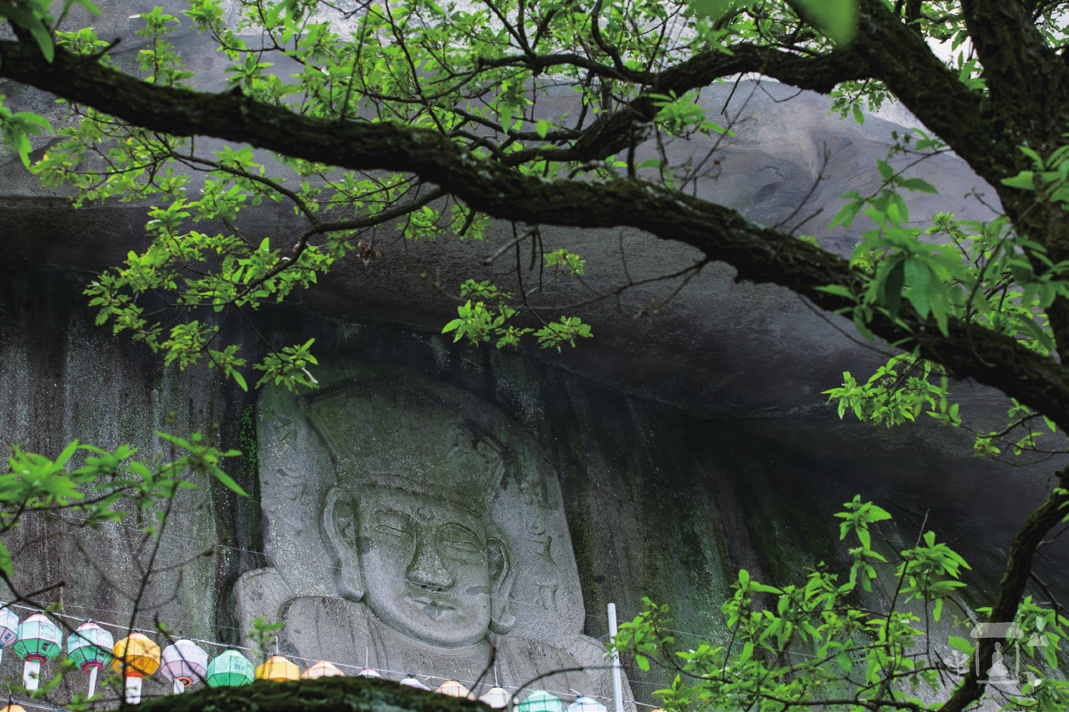In Search of the Truth Within
Bomunsa Temple in Ganghwa


"A cool breeze blows across the land which was scorched during the summer. The tree leaves on the mountainside are turning yellow. The birdsong is clear and the sky is high. Suddenly, it dawns on me: “Ah, autumn is here.” Autumn arrived before my lazy mind noticed it, and summer was fast fading into memory. One day, in not-too-distant future, the first snow will fall, signaling winter. Such scenes flash by in one’s mind fleetingly. But isn’t this always the case? At every moment the changing seasons reveal to us their most beautiful moments as they are happening. So, I open my eyes and listen intently to be aware of each moment. The truth of “Universal Gate Manifestation”—that all things are manifestations of Avalokitesvara Bodhisattva—spreads throughout my heart"
Originating in the Lotus Sutra, the concept of “Universal Gate Manifestation” refers to the pervasive presence of Avalokitesvara Bodhisattva, who freely manifests in diverse forms to save sentient beings. Avalokitesvara Bodhisattva manifests as family members, friends, and even animals to teach us, or manifests as a natural landscape to dissipate our delusions, offering us a sense of both emptiness and fullness. Since Avalokitesvara Bodhisattva exists everywhere, those who seek him/her will surely find this bodhisattva. However, this sentient being who dwells in ignorance is gripped by doubt. Can I also find Avalokitesvara Bodhisattva? On Seongmodo Island in Ganghwa-gun, Incheon, I calm my troubled mind in front of the inscription on the One Pillar Gate: “Bomunsa Temple on Mt. Nakgasan.” As the Korean translation of “Mt. Potalaka,” Mt. Nakgasan means “where Avalokitesvara Bodhisattva resides,” and on this mountain sits Bomunsa (lit. Universal Gate Temple), where Avalokitesvara Bodhisattva is said to be omnipresent. This is truly a temple of Avalokitesvara. Now, I am ready. I open my eyes and listen carefully.
The Path to Enlightenment at Bomunsa Temple
Passing the One Pillar Gate (Iljumun), I ascend Mt. Nakgasan. A ten-minute walk along the pine-scented forest path brings me to Bomunsa’s temple compound. Beneath the ridgeline of Mt. Nakgasan, which remind me of wings spread wide and ready to soar, a procession of halls welcomes all guests. The temple itself is quite grand in size. This magnificent temple was established here long ago at the westernmost tip of the Korean Peninsula, where the sea stretches beyond the tidal flats, and at the foot of Mt. Nakgasan, a place that feels like the end of the world. We can only try to imagine the effort it took to clear the ground, transport materials, and build it. Without fervent desire and diligent effort, how could this remote corner of the world become a temple dedicated to Avalokitesvara? The temple was founded by Hoejeong Seunim in 635—a monk who personally encountered a manifestation of Avalokitesvara Bodhisattva—and those who have visited Bomunsa Temple for over the past 1,400 years have also cherished the aspiration to attain buddhahood. The more I look into the stories of our ancestors, the clearer I understand their compassion and aspirations. These faithful people are the first manifestations of Avalokitesvara Bodhisattva I met at Bomunsa Temple. The path I walk leads to Geungnakbojeon (Paradise Hall), Wabuljeon (Reclining Buddha Hall), and the Rock-Carved Avalokitesvara Bodhisattva. In Geungnakbojeon Hall, the centerpiece of Bomunsa Temple, the statue of Amitabha Buddha is attended by Mahasthamaprapta Bodhisattva and Avalokitesvara Bodhisattva. I gaze up at Amitabha Buddha, the buddha of infinite life and infinite light. Leaving Geungnakbojeon Hall, I admire the Five Hundred Arhats enshrined on the terraced hillside and arrive at Wabuljeon Hall. Enshrined inside is a ten-meter-long statue of the Buddha—posed in a reclining position at the moment of entering nirvana. Before his physical energy completely dissipated, he said: “The Tathagata is not a physical body, but the wisdom of enlightenment. Even when the body departs, wisdom remains eternal.” This reclining buddha lies on his side, his hands and feet neatly posed, and his facial expression indifferent. Has he overcome the fear of death? No, because he knows the truth that there is no death, and without death, there is no fear to overcome. May this wisdom of infinite life and infinite light illuminate the world. Finally, I pay my respects to the Rock-Carved Avalokitesvara Bodhisattva, a symbol of Bomunsa Temple. Hundreds of steps later, I reach Eyebrow Rock located at the midslope of Mt. Nakgasan. Here, high above, the Rock-Carved Avalokitesvara Bodhisattva awaits the pilgrims. My mind, once consumed by the secular world, has become calm. As I climb the steep slope, I naturally find myself feeling humble. To ascend is to acknowledge and recognize the lowliness of this realm in which I now stand. I mingle with the praying crowd, lower myself and place my face on the surface of the prayer platform. Gratitude wells up in my heart for the karmic connection that led me to Bomunsa Temple to offer prayers. The Rock-Carved Avalokitesvara Bodhisattva looking down on us pilgrims is gentle, and my heart feels warm. The journey of letting go of myself while strenuously climbing up to the Rock-Carved Avalokitesvara Bodhisattva is my second encounter with Avalokitesvara Bodhisattva at Bomunsa Temple
The End and Beginning of a Journey
Turning around after praying, a wondrous sight interrupts my thoughts. The sun sinking below the horizon scatters the sunset across the sky, and the sky, now completely clear, casts crimson shadows across the mudflats and the sea. A peaceful breeze blows from the sun, dyeing Mt. Nakgasan in wondrous colors. My wandering thoughts vanish, and the fullness of emptiness fills me. The sensation of the sunset becoming me and myself becoming the sunset brings boundless peace to my heart. In this mindset of nondiscrimination, all living beings realize that everything is Avalokitesvara Bodhisattva. This alone is the eternal, harmless truth. The third manifestation of Avalokitesvara Bodhisattva I encounter at Bomunsa Temple is me, you, and the world itself.

Rock-Carved Avalokitesvara Bodhisattva
Visiting the Rock-Carved Avalokitesvara Bodhisattva at Bomunsa Temple is no easy feat, requiring climbing 419 steps, one by one, to the midslope of Mt. Nakgasan. While the climb is arduous, it’s crucial to not give up because the scenery you’ll see is breathtakingly beautiful. The mountainside, the village, the tidal flats, the islands, and the sea are meticulously layered together, reaching for the sky, which is a breathtaking sight. Sunset is particularly captivating, offering a breathtaking moment when the vast crimson sea is captured in one glance. If you think of Eyebrow Rock as the canopy that protects a Buddha statue, the bodhisattva carved into the rock face also inspires devotion. Measuring 9.2 meters tall and 3.3 meters wide, the Rock-Carved Avalokitesvara Bodhisattva is widely recognized as a symbol of Bomunsa Temple, Korea’s leading Avalokitesvara temple.
Wabuljeon Hall and the Five Hundred Arhats
Near Geungnakbojeon Hall stands Cheonindae, a 40-meter-long and 5-meter-wide rock. The name “Cheonindae” implies it is a rock large enough for 1,000 people to gather upon for a Buddhist ceremony. Given this significant location, Bomunsa Temple erected Wabuljeon Hall here to reflect on the significance of the Buddha’s nirvana. Next to Wabuljeon Hall are the Five Hundred Arhats and the 33 representations of Avalokitesvara Bodhisattva. Built in 2005, the Pagoda of Relics is a three-story stone stupa featuring 33 Avalokitesvara images with eleven on each story. The Avalokitesvara images are surmounted by dragon heads, adding to the grandeur of the temple. The Five Hundred Arhats arrayed behind the pagoda, each with a different facial expression and form, offer a glimpse into the depth of their Buddhist practice. Wabuljeon Hall and the Five Hundred Arhats are both precious treasures and focal points for a pilgrimage to Bomunsa Temple
Seoksil (Stone Chamber)
Also known as Nahanjeon (Hall of Arhats), Seoksil possesses exceptional historic value, primarily as a rare Korean grotto temple. Furthermore, legend has it that it was built just a few years after the founding of Bomunsa Temple. The story of its creation goes like this: In 649, 14 years after Bomunsa Temple opened, fishermen caught 22 boulders instead of fish. Frightened by the strange, human-like shapes of the boulders, the fishermen threw them back into the sea and sailed away. However, they continued to catch these boulders in their nets, not fish. Ultimately, the boulders were enshrined in a cave at Bomunsa Temple, and Seoksil was later built to house them. The clear sounds of prayers continually resonate in Seoksil and always bring a sense of the temple’s long history.





